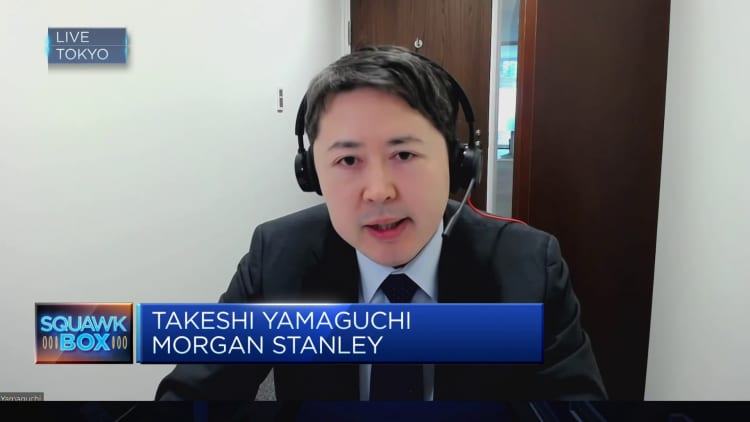A woman takes photos under the Kanzakura cherry trees in full bloom in Ueno Park, Tokyo. Kanzakura cherry trees herald the early arrival of spring in Tokyo.
James Matsumoto | Sopa Images | Lightrocket | Getty Images
Goldman Sachs now expects the Bank of Japan to raise interest rates for the first time in 17 years at its March meeting this week, bringing forward its previous forecast for an April decision.
The bank’s senior Japan economist Tomohiro Ota cited stronger-than-expected salary gains at the annual “shunto” wages negotiations and subsequent Japanese news reports of an exit from negative rates at the BOJ’s March meeting that ends Tuesday.
“The BOJ has not sent any signal denying the news so far,” Ota wrote in a Monday note. “Together, these developments imply that the BOJ probably no longer needs more data for the policy change, nor to wait to justify the policy change with the quarterly Economic Outlook report in April.”
While a slim majority of economists are still expecting the central bank to raise rate in April, an increasing number of economists have moved their forecasts forward to March in the last two weeks amid signs that salary negotiations this year will be far more robust than expected.
Ota said he expects the BOJ to abolish its yield curve control policy, which the central bank employs to target longer-term interest rates, by buying and selling bonds as necessary. Still, he expects the central bank will “not explicitly commit” to the size of its Japanese government bond purchases or the cessation of its ETF purchases.
“The overshooting commitment, by which the BOJ commits to increase monetary base, is likely to be abolished as well,” he added.
While the central bank has effectively loosened its yield curve control policy over longer term interest rates over the past 16 months, it has kept interest rates at -0.1% and still maintains an upper limit for 10-year Japanese government bond yield at 1% as a reference.
While BOJ Governor Kazuo Ueda meets with his other eight board members eight times a year, the central bank updates its economic outlook only four times: in January, April, July and October.
Virtuous spiral
Ueda has repeatedly said the outcome of this year’s wage negotiations will be a key factor in ensuring sustainable price increases. The Bank of Japan expects higher wages to lead to a virtuous spiral that will lead to inflation spurred by domestic demand.
Japan’s largest federation of trade union, Rengo, on Friday said workers at the country’s biggest firms are set to receive a weighted average of 5.28% in salary increments in fiscal year 2024, according to the first of its several provisional tabulation of this year’s negotiations at its constituent unions.

Workers at small firms can expect to receive pay hikes averaging 4.42%, with base pay for Rengo’s members also raising by an average 3.7%. These figures exceed last year’s gains and are the sharpest spikes in three decades.
Despite “core core inflation” — which excludes food and energy prices — exceeding its 2% target for more than a year, the BOJ has barely budged from its current ultra-loose monetary policy posture that has been in place in 2016.
If the Bank of Japan moves to eliminate the world’s last remaining negative rates regime, it would mark the start of the end of its decades-long monetary policy experimentation aimed at lifting the world’s fourth-largest economy out of deflation.
Source Agencies



